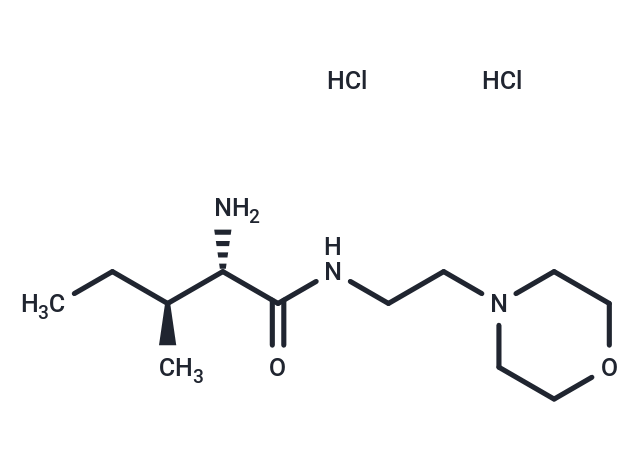Shopping Cart
Remove All Your shopping cart is currently empty
Your shopping cart is currently empty
LM11A-31 dihydrochloride is a water-soluble, non-peptide with high blood-brain barrier permeability.LM11A-31 dihydrochloride, a p75NTR (neurotrophin receptor p75) Ligand, is a potent proNGF (nerve growth factor) antagonist.

| Pack Size | Price | USA Warehouse | Global Warehouse | Quantity |
|---|---|---|---|---|
| 25 mg | $48 | In Stock | In Stock | |
| 50 mg | $67 | In Stock | In Stock | |
| 100 mg | $88 | In Stock | In Stock | |
| 500 mg | $220 | In Stock | In Stock |
| Description | LM11A-31 dihydrochloride is a water-soluble, non-peptide with high blood-brain barrier permeability.LM11A-31 dihydrochloride, a p75NTR (neurotrophin receptor p75) Ligand, is a potent proNGF (nerve growth factor) antagonist. |
| In vivo | LM11A-31 (orally; 50 or 75 mg/kg) administered for 3 months starting at 6-8 months of age prevents and/or reverses atrophy of basal forebrain cholinergic neurites and cortical dystrophic neurites in mid-stage male APPL/S mice[2].?LM11A-31 (oral gavage;?50 mg kg/day for 4 weeks) significantly mitigates proNGF accumulation and preserves BRB integrity[1]. |
| Molecular Weight | 316.27 |
| Formula | C12H27Cl2N3O2 |
| Cas No. | 1243259-19-9 |
| Smiles | Cl.Cl.CC[C@H](C)[C@H](N)C(=O)NCCN1CCOCC1 |
| Relative Density. | no data available |
| Color | Yellow |
| Appearance | Solid |
| Storage | keep away from moisture,store under nitrogen | Powder: -20°C for 3 years | In solvent: -80°C for 1 year | Shipping with blue ice/Shipping at ambient temperature. | |||||||||||||||||||||||||||||||||||
| Solubility Information | H2O: 125 mg/mL (395.23 mM), Sonication is recommended. | |||||||||||||||||||||||||||||||||||
Solution Preparation Table | ||||||||||||||||||||||||||||||||||||
H2O
| ||||||||||||||||||||||||||||||||||||
| Size | Quantity | Unit Price | Amount | Operation |
|---|

Copyright © 2015-2026 TargetMol Chemicals Inc. All Rights Reserved.